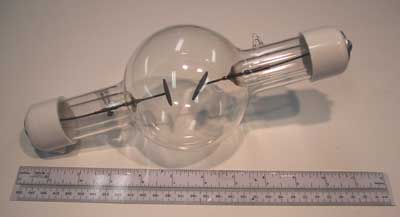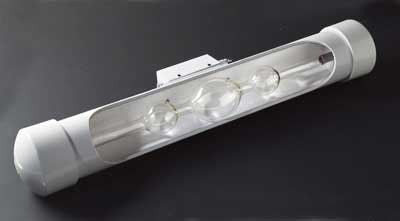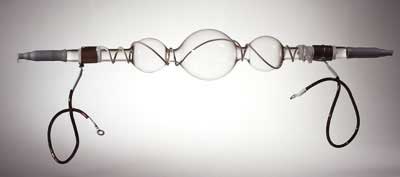RF (Bare-Rife) Type Tubes
Bare Rife tubes come in an interesting assortment of sizes and shapes .. not quite the variety of the high voltage type devices. Unlike the HV tubes, they have to be able to withstand a MUCH higher level of abuse …. Which typically equates to much higher currents and operating temperatures.
Phanatron
As mentioned above, Rife used a form of the phanatron tube … actually discarded X-Ray tubes which he regassed to his own needs for his research. Because he had a pretty much unlimited supply, I suspect he was not particularly concerned about longevity.

Phanatron tubes are compact, can be somewhat directional,
very easy to mount, and solid physical connection/wiring is
quite easy.
On the “down” side, Phanatron tubes have a limited and estimated lifetime and degrade from time of first use.
Bubble Tubes (General Comments)
Bubble tubes have become the norm for most Rife work. Especially
true in Bare-Rife (RF) excited configurations, the extra gas
volume is very advantageous in providing sort of a buffer
in allowing the tube to be easier tuned over the changing
frequency range.
[DISCUSS THIS MORE IN DETAIL]
Triple Bubble
My personal favorite and the ONLY one I currently recommend for my large Bare-Rife systems, provides the size and volume for excellent Bare-Rife performance. The length also provides the space needed to wrap the tube so that the gas is quickly and efficiently excited so that it effectively and efficiently absorbs the RF energy to form the Plasma. The helical coil also provides sort of a wave guide, which combined with the attributes of the gas and pressures keep the plasma centered along the longitudinal axis of the tube and away from the glass … helping keep the temperatures to a tolerable level. In fact with the 80% argon/20% neon mix that I use, tube temperatures remain quite acceptable.
|
||
|
Double Bubble
A double bubble version of these Bare-Rife tubes are available, however I have never actually seen one first hand. (No photo currently available.)
Single Bubble
This is still a favorite and versatile tube for the serious Rife experimenter. Offers increased volume in an economical package.
 |
| Typical Single Bubble Bare-Rife Tube |
 |
| Compact Single Bubble Bare-Rife Tube |
A variation of the standard single bubble is the Compact Single Bubble Tube which can be an exceptional performer, designed for smaller/lower power systems while allowing the performance of an increased volume tube. It looks identical in approximate size and shape to the typical E-Gas Single bubbles however it is manufactured with standard Bare-Rife mixes to withstand the higher operating temperatures due to relatively high RF drive.
Straight Tubes
Probably quite effective when using frequencies close together but may have a disadvantage in that they may be harder to tune across a wide range of frequencies and circumstances. Different manufacturers may use different diameter tubes. Even though it is typically the cheapest to manufacturer, don’t however rule out the straight tube for general Rife experimentation as it can provide the most uniform “beam” of all the tubes equating to a controlled, overall higher level of excitement of the plasma particles. (That is a very good thing)
Folded Tubes
Folded or U-Tubes are simply a version of the Straight Tube but typically provide for convenient, space-saving and mounting. I’ve personally never had or worked with a U-Tube but I hope to in the near future.



